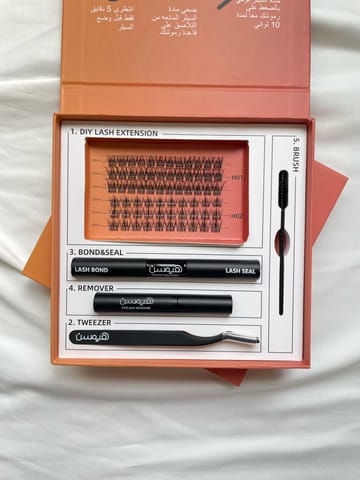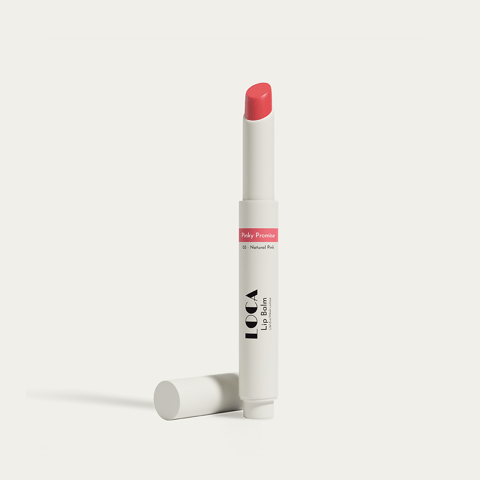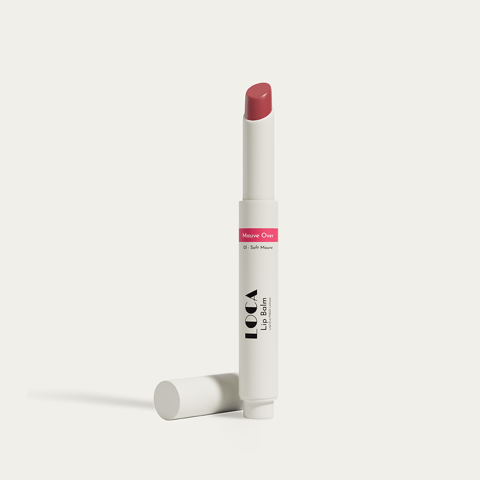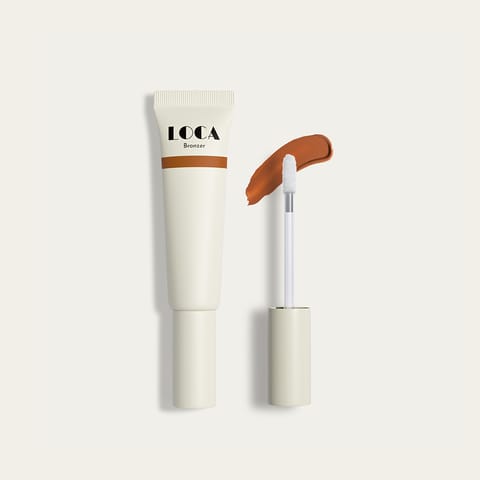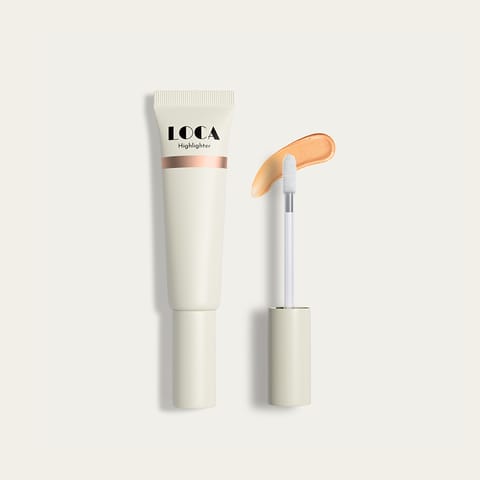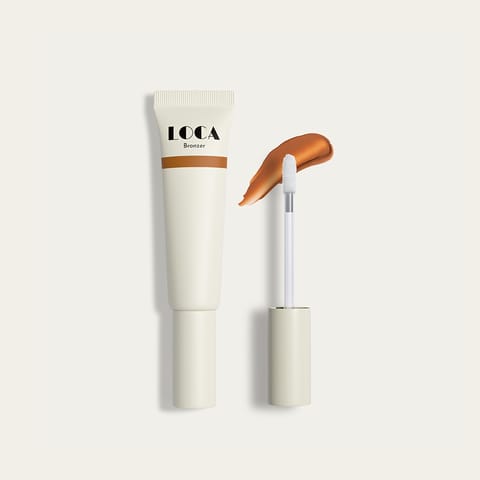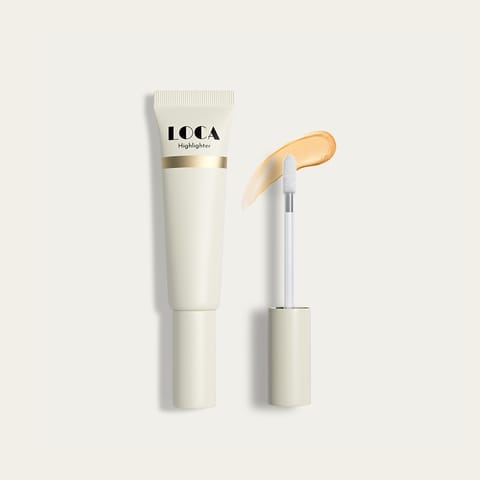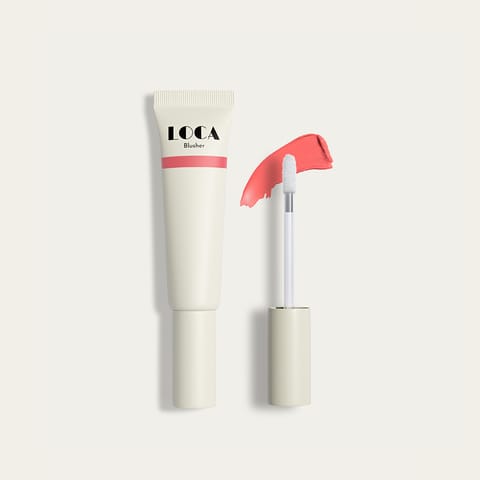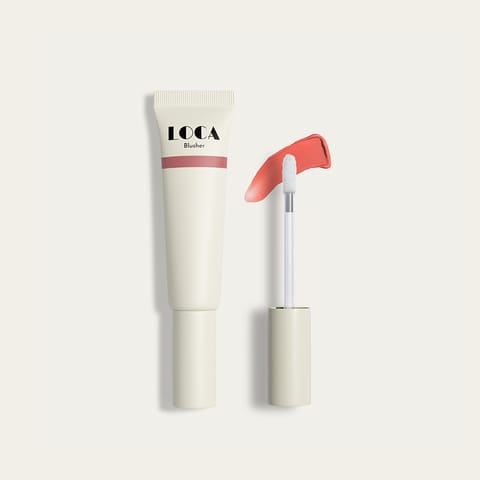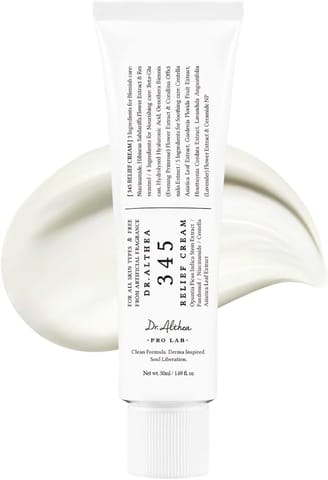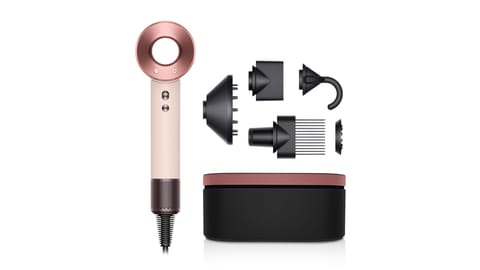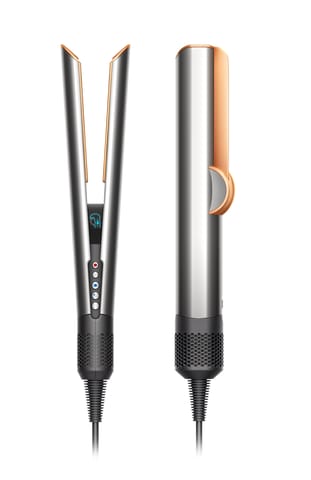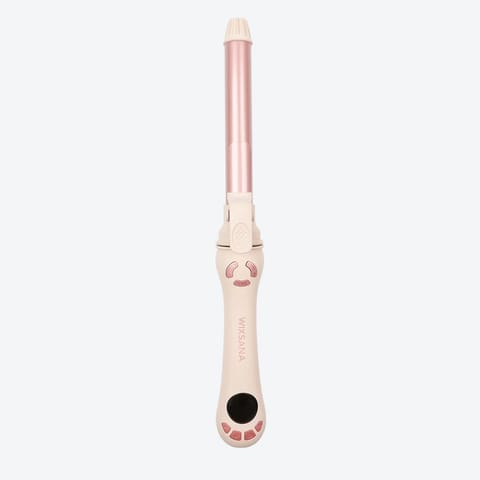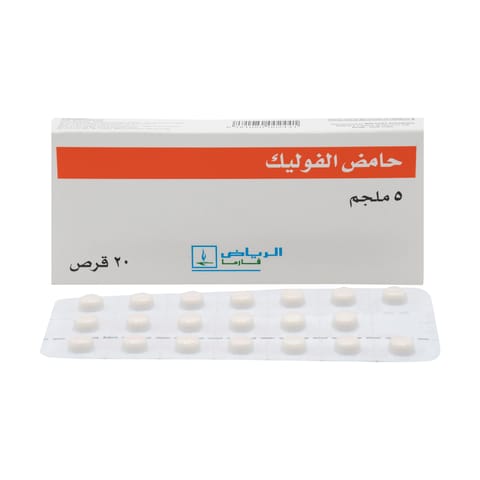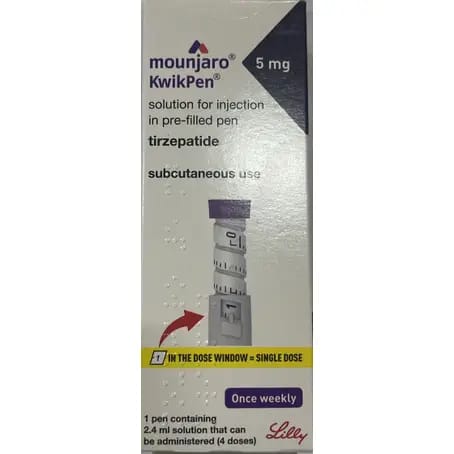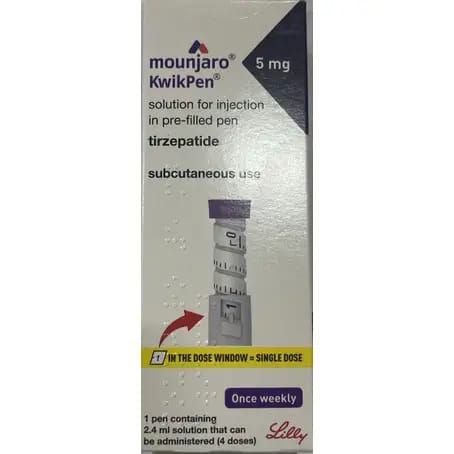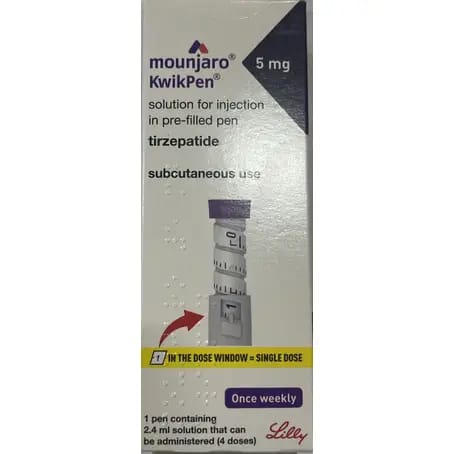Product Description:
What is Mounjaro?
Mounjaro is a once-weekly injection that is FDA approved to be used to decrease blood sugar (blood glucose) in adults who havetype 2 diabetes. It should be used together with diet and exercise. Mounjaro has also been shown in clinical trials to be useful forweight loss, however it is currentlynotanFDA approved weight loss drug.
Diabetes is a long term condition when your blood sugars (HbA1c) become too high because the body does not produce or use insulin normally. Overtime high blood sugars can cause serious health problems includingheart disease,vision lossandkidney disease.
Mounjaro works to reduce blood sugar levels by increasing your insulin production and also lowering the amount of sugar your liver makes. It also slows the rate food passes through your body which makes you feel full longer.
Mounjaro (Tirzepatide) is the first dual GIP/GLP-1 receptor agonist which means it works on the glucose-dependent insulinotropic polypeptide (GIP) receptors and the glucagon-like peptide-1 (GLP-1) receptors.
Mounjaro can be used as a single therapy or with other diabetes medicines includingmetformin,sulfonylureasorSGLT2 inhibitors.
It is not known if this medicine can be used in people who have hadpancreatitis.
Mounjaro is not for use in people withtype 1 diabetes.
Is Mounjaro used for weight loss?
- Mounjaro has also shown to help lose weight in overweight patients. It is currently in Phase 3 clinical trials for weight loss in adults who are overweight, obese or have weight related health issues. Mounjaro has received FDA Fast Track designation to speed up its path for FDA submission for treating adults with obesity, or overweight with weight-related health conditions.
- In the SURMOUNT-1 clinical trial the average weight loss after 72 weeks was 15% for the 5mg dose, 19.5% for the 10mg dose and 20.9% for the 15mg dose.
- Mounjaro isnotFDA approved as a weight loss medication.
Important information:
Mounjaro may cause thyroid C-cell tumors. Tell your doctor if you have a personal or family history of thyroid cancer or a condition called Multiple Endocrine Neoplasia (MEN) syndrome (a syndrome that causes tumors to develop on endocrine glands). If you experience any of the following symptoms, call your doctor immediately: lump or swelling in your neck, hoarseness, trouble swallowing, or shortness of breath.
Keep all appointments with your doctor and the laboratory. Your doctor may order certain tests to check your body's response to this medicine.
Before using Mounjaro:
- Tell your doctor and pharmacist if you are allergic to Mounjaro, any other medications, or any of the ingredients in this injection. Ask your pharmacist or check theMedication Guide for a list of the ingredients.
- Tell your doctor if you have or have ever had pancreas or kidney disease, stomach problems such as difficulty digesting food, or history of diabetic retinopathy.
- Tell your doctor if you are pregnant, plan to become pregnant, or are breast-feeding. If you become pregnant while taking this medicine, call your doctor.
How should I use Mounjaro?
Mounjaro comes as a solution (liquid) in a pre-filled pen to be injected subcutaneously (under the skin). It is usually given once a week with or without meals at any time of day. Follow the directions on your prescription label carefully, and ask your doctor or pharmacist to explain any part you do not understand. Use this medicine exactly as directed. Do not take more or less of it or take it more often than prescribed by your doctor.
Your doctor will probably start you on a low dose and gradually increase your dose, not more than once every 4 weeks.
You may change the day of the week you inject this medicine as long as at least 3 days have passed between doses.
You may administer insulin in the same area as Mounjaro but they should not be given right next to each other. Also, you should not mix Mounjaro and insulin in the same injection.
Mounjaro controls type 2 diabetes but does not cure it. It may take 4 weeks or longer before you feel the full benefit of this medicine. Continue to take this medicine even if you feel well. Do not stop taking this medicine without talking to your doctor.
Mounjaro can be injected in the abdomen, thigh or upper arm. Rotate injection sites with each dose.
What should I do if I miss a dose?
Take the missed dose as soon as you remember it within 4 days after the missed dose. However, if more than 4 days have passed, skip the missed dose and continue your regular dosing schedule. Do not inject two doses within 3 days of each other.
What are the side effects of Mounjaro?
Mounjaro may cause side effects. Tell your doctor if any of these symptoms are severe or do not go away:
- nausea
- diarrhea
- decreased appetite
- vomiting
- constipation
- upset stomach
Some side effects can be serious. If you experience any of these symptoms or those listed in the Important Information section, stop taking this medicine and call your doctor immediately:
- stomach pain that will not go away (and may radiate to the back) with or without vomiting
Mounjaro may causehypoglycemia(low blood sugar). Signs and symptoms of low blood sugar may include dizziness or lightheadedness, blurred vision, anxiety, irritability or mood changes, sweating, slurred speech, hunger, confusion or drowsiness, shakiness, weakness, headache, fast heart rate and feeling jittery.This medicine may cause other side effects. Call your doctor if you have any unusual problems while taking this medication. If you experience a serious side effect, you or your doctor may send a report to the Food and Drug Administration's (FDA) MedWatch Adverse Event Reporting program online or by phone (1-800-332-1088).
Interactions:
Tell your doctor and pharmacist what prescription and nonprescription medications, vitamins, nutritional supplements, and herbal products you are taking or plan to take. Your doctor may need to change the doses of your medications or monitor you carefully for side effects.
Birth control pillsmay not work as well while receiving this medicine. Your doctor may suggest you use another form ofbirth controlfor 4 weeks after starting Mounjaro and for 4 weeks after each dose change.
Taking Mounjaro with other medicines to treat diabetes like insulin or sulfonylureas may increase your risk of hypoglycemia. Talk to your doctor and pharmacist about low blood sugar and how to manage it.
This list is not complete. Many other drugs may interact with Mounjaro, including prescription and over-the-counter medicines, vitamins, and herbal products. To check for interactions with this medicine click the link below.
Storage:
Mounjaro should be stored in the refrigerator between 36°F to 46°F (2°C to 8°C). Keep it in the original carton until use to protect from light. Single-dose pens can be stored at room temperature for 21 days, if needed. Store your medication only as directed. Make sure you understand how to store your medication properly.
What are the ingredients in Mounjaro?
Active ingredient: tirzepatide
Inactive ingredients: sodium chloride, sodium phosphate dibasic heptahydrate, and water for injection. Hydrochloric acid solution and/or sodium hydroxide solution may have been added to adjust the pH.
53200Best selling products
 12.36
12.36 19.01 SAVE 35%
19.01 SAVE 35%Save 35%
 12.36
12.36 19.01 SAVE 35%
19.01 SAVE 35%Save 35%
 12.36
12.36 19.01 SAVE 35%
19.01 SAVE 35%Save 35%
 29.93
29.93 46.05 SAVE 35%
46.05 SAVE 35%Save 35%
Best selling products
 177.98
177.98 177.98
177.98 355.95 SAVE 50%
355.95 SAVE 50%Save 50%
 97.18
97.18 194.35 SAVE 50%
194.35 SAVE 50%Save 50%
Best selling products
 110.4
110.4 138 SAVE 20%
138 SAVE 20%20% Off
 257.6
257.6 322 SAVE 20%
322 SAVE 20%20% Off
 9.48
9.48 18.95 SAVE 50%
18.95 SAVE 50%Save 50%
Best selling products
 219.26
219.26 337.33 SAVE 35%
337.33 SAVE 35%Save 35%
 367.5
367.5 612.5 SAVE 40%
612.5 SAVE 40%40% Off
 30.4
30.4 38 SAVE 20%
38 SAVE 20%20% Off
 25.6
25.6 32 SAVE 20%
32 SAVE 20%20% Off
 210.75
210.75 351.25 SAVE 40%
351.25 SAVE 40%40% Off
 786
786 1572 SAVE 50%
1572 SAVE 50%Save 50%
Best selling products
Best selling products
 75.01
75.01 115.4 SAVE 35%
115.4 SAVE 35%Save 35%
 17.45
17.45 17.45
17.45 24.93 SAVE 30%
24.93 SAVE 30%Save 30%
 43
43 86 SAVE 50%
86 SAVE 50%Save 50%
 91.43
91.43 182.85 SAVE 50%
182.85 SAVE 50%Save 50%
Recently viewed
- Home
- Medications
- Medication
- Mounjaro 5 Mg/0.6ml Kwikpen 4 Doses
Mounjaro 5 Mg/0.6ml Kwikpen 4 Doses
 1261.4
1261.4Loyalty Program
Loyalty
For each qualifying purchase you make, you will accumulate loyalty points. These points can then be redeemed for a variety of rewards such as discounts, exclusive, offers or even free products.
For Each
100
SAR
-->
100
POINTS
TIER2
100
SPAR SPEND
=
100
POINTS
TIER3
100
SPAR SPEND
=
100
POINTS
- Details
Product Description:
What is Mounjaro?
Mounjaro is a once-weekly injection that is FDA approved to be used to decrease blood sugar (blood glucose) in adults who havetype 2 diabetes. It should be used together with diet and exercise. Mounjaro has also been shown in clinical trials to be useful forweight loss, however it is currentlynotanFDA approved weight loss drug.
Diabetes is a long term condition when your blood sugars (HbA1c) become too high because the body does not produce or use insulin normally. Overtime high blood sugars can cause serious health problems includingheart disease,vision lossandkidney disease.
Mounjaro works to reduce blood sugar levels by increasing your insulin production and also lowering the amount of sugar your liver makes. It also slows the rate food passes through your body which makes you feel full longer.
Mounjaro (Tirzepatide) is the first dual GIP/GLP-1 receptor agonist which means it works on the glucose-dependent insulinotropic polypeptide (GIP) receptors and the glucagon-like peptide-1 (GLP-1) receptors.
Mounjaro can be used as a single therapy or with other diabetes medicines includingmetformin,sulfonylureasorSGLT2 inhibitors.
It is not known if this medicine can be used in people who have hadpancreatitis.
Mounjaro is not for use in people withtype 1 diabetes.
Is Mounjaro used for weight loss?
- Mounjaro has also shown to help lose weight in overweight patients. It is currently in Phase 3 clinical trials for weight loss in adults who are overweight, obese or have weight related health issues. Mounjaro has received FDA Fast Track designation to speed up its path for FDA submission for treating adults with obesity, or overweight with weight-related health conditions.
- In the SURMOUNT-1 clinical trial the average weight loss after 72 weeks was 15% for the 5mg dose, 19.5% for the 10mg dose and 20.9% for the 15mg dose.
- Mounjaro isnotFDA approved as a weight loss medication.
Important information:
Mounjaro may cause thyroid C-cell tumors. Tell your doctor if you have a personal or family history of thyroid cancer or a condition called Multiple Endocrine Neoplasia (MEN) syndrome (a syndrome that causes tumors to develop on endocrine glands). If you experience any of the following symptoms, call your doctor immediately: lump or swelling in your neck, hoarseness, trouble swallowing, or shortness of breath.
Keep all appointments with your doctor and the laboratory. Your doctor may order certain tests to check your body's response to this medicine.
Before using Mounjaro:
- Tell your doctor and pharmacist if you are allergic to Mounjaro, any other medications, or any of the ingredients in this injection. Ask your pharmacist or check theMedication Guide for a list of the ingredients.
- Tell your doctor if you have or have ever had pancreas or kidney disease, stomach problems such as difficulty digesting food, or history of diabetic retinopathy.
- Tell your doctor if you are pregnant, plan to become pregnant, or are breast-feeding. If you become pregnant while taking this medicine, call your doctor.
How should I use Mounjaro?
Mounjaro comes as a solution (liquid) in a pre-filled pen to be injected subcutaneously (under the skin). It is usually given once a week with or without meals at any time of day. Follow the directions on your prescription label carefully, and ask your doctor or pharmacist to explain any part you do not understand. Use this medicine exactly as directed. Do not take more or less of it or take it more often than prescribed by your doctor.
Your doctor will probably start you on a low dose and gradually increase your dose, not more than once every 4 weeks.
You may change the day of the week you inject this medicine as long as at least 3 days have passed between doses.
You may administer insulin in the same area as Mounjaro but they should not be given right next to each other. Also, you should not mix Mounjaro and insulin in the same injection.
Mounjaro controls type 2 diabetes but does not cure it. It may take 4 weeks or longer before you feel the full benefit of this medicine. Continue to take this medicine even if you feel well. Do not stop taking this medicine without talking to your doctor.
Mounjaro can be injected in the abdomen, thigh or upper arm. Rotate injection sites with each dose.
What should I do if I miss a dose?
Take the missed dose as soon as you remember it within 4 days after the missed dose. However, if more than 4 days have passed, skip the missed dose and continue your regular dosing schedule. Do not inject two doses within 3 days of each other.
What are the side effects of Mounjaro?
Mounjaro may cause side effects. Tell your doctor if any of these symptoms are severe or do not go away:
- nausea
- diarrhea
- decreased appetite
- vomiting
- constipation
- upset stomach
Some side effects can be serious. If you experience any of these symptoms or those listed in the Important Information section, stop taking this medicine and call your doctor immediately:
- stomach pain that will not go away (and may radiate to the back) with or without vomiting
Mounjaro may causehypoglycemia(low blood sugar). Signs and symptoms of low blood sugar may include dizziness or lightheadedness, blurred vision, anxiety, irritability or mood changes, sweating, slurred speech, hunger, confusion or drowsiness, shakiness, weakness, headache, fast heart rate and feeling jittery.This medicine may cause other side effects. Call your doctor if you have any unusual problems while taking this medication. If you experience a serious side effect, you or your doctor may send a report to the Food and Drug Administration's (FDA) MedWatch Adverse Event Reporting program online or by phone (1-800-332-1088).
Interactions:
Tell your doctor and pharmacist what prescription and nonprescription medications, vitamins, nutritional supplements, and herbal products you are taking or plan to take. Your doctor may need to change the doses of your medications or monitor you carefully for side effects.
Birth control pillsmay not work as well while receiving this medicine. Your doctor may suggest you use another form ofbirth controlfor 4 weeks after starting Mounjaro and for 4 weeks after each dose change.
Taking Mounjaro with other medicines to treat diabetes like insulin or sulfonylureas may increase your risk of hypoglycemia. Talk to your doctor and pharmacist about low blood sugar and how to manage it.
This list is not complete. Many other drugs may interact with Mounjaro, including prescription and over-the-counter medicines, vitamins, and herbal products. To check for interactions with this medicine click the link below.
Storage:
Mounjaro should be stored in the refrigerator between 36°F to 46°F (2°C to 8°C). Keep it in the original carton until use to protect from light. Single-dose pens can be stored at room temperature for 21 days, if needed. Store your medication only as directed. Make sure you understand how to store your medication properly.
What are the ingredients in Mounjaro?
Active ingredient: tirzepatide
Inactive ingredients: sodium chloride, sodium phosphate dibasic heptahydrate, and water for injection. Hydrochloric acid solution and/or sodium hydroxide solution may have been added to adjust the pH.
Product Description:
What is Mounjaro?
Mounjaro is a once-weekly injection that is FDA approved to be used to decrease blood sugar (blood glucose) in adults who havetype 2 diabetes. It should be used together with diet and exercise. Mounjaro has also been shown in clinical trials to be useful forweight loss, however it is currentlynotanFDA approved weight loss drug.
Diabetes is a long term condition when your blood sugars (HbA1c) become too high because the body does not produce or use insulin normally. Overtime high blood sugars can cause serious health problems includingheart disease,vision lossandkidney disease.
Mounjaro works to reduce blood sugar levels by increasing your insulin production and also lowering the amount of sugar your liver makes. It also slows the rate food passes through your body which makes you feel full longer.
Mounjaro (Tirzepatide) is the first dual GIP/GLP-1 receptor agonist which means it works on the glucose-dependent insulinotropic polypeptide (GIP) receptors and the glucagon-like peptide-1 (GLP-1) receptors.
Mounjaro can be used as a single therapy or with other diabetes medicines includingmetformin,sulfonylureasorSGLT2 inhibitors.
It is not known if this medicine can be used in people who have hadpancreatitis.
Mounjaro is not for use in people withtype 1 diabetes.
Is Mounjaro used for weight loss?
- Mounjaro has also shown to help lose weight in overweight patients. It is currently in Phase 3 clinical trials for weight loss in adults who are overweight, obese or have weight related health issues. Mounjaro has received FDA Fast Track designation to speed up its path for FDA submission for treating adults with obesity, or overweight with weight-related health conditions.
- In the SURMOUNT-1 clinical trial the average weight loss after 72 weeks was 15% for the 5mg dose, 19.5% for the 10mg dose and 20.9% for the 15mg dose.
- Mounjaro isnotFDA approved as a weight loss medication.
Important information:
Mounjaro may cause thyroid C-cell tumors. Tell your doctor if you have a personal or family history of thyroid cancer or a condition called Multiple Endocrine Neoplasia (MEN) syndrome (a syndrome that causes tumors to develop on endocrine glands). If you experience any of the following symptoms, call your doctor immediately: lump or swelling in your neck, hoarseness, trouble swallowing, or shortness of breath.
Keep all appointments with your doctor and the laboratory. Your doctor may order certain tests to check your body's response to this medicine.
Before using Mounjaro:
- Tell your doctor and pharmacist if you are allergic to Mounjaro, any other medications, or any of the ingredients in this injection. Ask your pharmacist or check theMedication Guide for a list of the ingredients.
- Tell your doctor if you have or have ever had pancreas or kidney disease, stomach problems such as difficulty digesting food, or history of diabetic retinopathy.
- Tell your doctor if you are pregnant, plan to become pregnant, or are breast-feeding. If you become pregnant while taking this medicine, call your doctor.
How should I use Mounjaro?
Mounjaro comes as a solution (liquid) in a pre-filled pen to be injected subcutaneously (under the skin). It is usually given once a week with or without meals at any time of day. Follow the directions on your prescription label carefully, and ask your doctor or pharmacist to explain any part you do not understand. Use this medicine exactly as directed. Do not take more or less of it or take it more often than prescribed by your doctor.
Your doctor will probably start you on a low dose and gradually increase your dose, not more than once every 4 weeks.
You may change the day of the week you inject this medicine as long as at least 3 days have passed between doses.
You may administer insulin in the same area as Mounjaro but they should not be given right next to each other. Also, you should not mix Mounjaro and insulin in the same injection.
Mounjaro controls type 2 diabetes but does not cure it. It may take 4 weeks or longer before you feel the full benefit of this medicine. Continue to take this medicine even if you feel well. Do not stop taking this medicine without talking to your doctor.
Mounjaro can be injected in the abdomen, thigh or upper arm. Rotate injection sites with each dose.
What should I do if I miss a dose?
Take the missed dose as soon as you remember it within 4 days after the missed dose. However, if more than 4 days have passed, skip the missed dose and continue your regular dosing schedule. Do not inject two doses within 3 days of each other.
What are the side effects of Mounjaro?
Mounjaro may cause side effects. Tell your doctor if any of these symptoms are severe or do not go away:
- nausea
- diarrhea
- decreased appetite
- vomiting
- constipation
- upset stomach
Some side effects can be serious. If you experience any of these symptoms or those listed in the Important Information section, stop taking this medicine and call your doctor immediately:
- stomach pain that will not go away (and may radiate to the back) with or without vomiting
Mounjaro may causehypoglycemia(low blood sugar). Signs and symptoms of low blood sugar may include dizziness or lightheadedness, blurred vision, anxiety, irritability or mood changes, sweating, slurred speech, hunger, confusion or drowsiness, shakiness, weakness, headache, fast heart rate and feeling jittery.This medicine may cause other side effects. Call your doctor if you have any unusual problems while taking this medication. If you experience a serious side effect, you or your doctor may send a report to the Food and Drug Administration's (FDA) MedWatch Adverse Event Reporting program online or by phone (1-800-332-1088).
Interactions:
Tell your doctor and pharmacist what prescription and nonprescription medications, vitamins, nutritional supplements, and herbal products you are taking or plan to take. Your doctor may need to change the doses of your medications or monitor you carefully for side effects.
Birth control pillsmay not work as well while receiving this medicine. Your doctor may suggest you use another form ofbirth controlfor 4 weeks after starting Mounjaro and for 4 weeks after each dose change.
Taking Mounjaro with other medicines to treat diabetes like insulin or sulfonylureas may increase your risk of hypoglycemia. Talk to your doctor and pharmacist about low blood sugar and how to manage it.
This list is not complete. Many other drugs may interact with Mounjaro, including prescription and over-the-counter medicines, vitamins, and herbal products. To check for interactions with this medicine click the link below.
Storage:
Mounjaro should be stored in the refrigerator between 36°F to 46°F (2°C to 8°C). Keep it in the original carton until use to protect from light. Single-dose pens can be stored at room temperature for 21 days, if needed. Store your medication only as directed. Make sure you understand how to store your medication properly.
What are the ingredients in Mounjaro?
Active ingredient: tirzepatide
Inactive ingredients: sodium chloride, sodium phosphate dibasic heptahydrate, and water for injection. Hydrochloric acid solution and/or sodium hydroxide solution may have been added to adjust the pH.
Product Description:
What is Mounjaro?
Mounjaro is a once-weekly injection that is FDA approved to be used to decrease blood sugar (blood glucose) in adults who havetype 2 diabetes. It should be used together with diet and exercise. Mounjaro has also been shown in clinical trials to be useful forweight loss, however it is currentlynotanFDA approved weight loss drug.
Diabetes is a long term condition when your blood sugars (HbA1c) become too high because the body does not produce or use insulin normally. Overtime high blood sugars can cause serious health problems includingheart disease,vision lossandkidney disease.
Mounjaro works to reduce blood sugar levels by increasing your insulin production and also lowering the amount of sugar your liver makes. It also slows the rate food passes through your body which makes you feel full longer.
Mounjaro (Tirzepatide) is the first dual GIP/GLP-1 receptor agonist which means it works on the glucose-dependent insulinotropic polypeptide (GIP) receptors and the glucagon-like peptide-1 (GLP-1) receptors.
Mounjaro can be used as a single therapy or with other diabetes medicines includingmetformin,sulfonylureasorSGLT2 inhibitors.
It is not known if this medicine can be used in people who have hadpancreatitis.
Mounjaro is not for use in people withtype 1 diabetes.
Is Mounjaro used for weight loss?
- Mounjaro has also shown to help lose weight in overweight patients. It is currently in Phase 3 clinical trials for weight loss in adults who are overweight, obese or have weight related health issues. Mounjaro has received FDA Fast Track designation to speed up its path for FDA submission for treating adults with obesity, or overweight with weight-related health conditions.
- In the SURMOUNT-1 clinical trial the average weight loss after 72 weeks was 15% for the 5mg dose, 19.5% for the 10mg dose and 20.9% for the 15mg dose.
- Mounjaro isnotFDA approved as a weight loss medication.
Important information:
Mounjaro may cause thyroid C-cell tumors. Tell your doctor if you have a personal or family history of thyroid cancer or a condition called Multiple Endocrine Neoplasia (MEN) syndrome (a syndrome that causes tumors to develop on endocrine glands). If you experience any of the following symptoms, call your doctor immediately: lump or swelling in your neck, hoarseness, trouble swallowing, or shortness of breath.
Keep all appointments with your doctor and the laboratory. Your doctor may order certain tests to check your body's response to this medicine.
Before using Mounjaro:
- Tell your doctor and pharmacist if you are allergic to Mounjaro, any other medications, or any of the ingredients in this injection. Ask your pharmacist or check theMedication Guide for a list of the ingredients.
- Tell your doctor if you have or have ever had pancreas or kidney disease, stomach problems such as difficulty digesting food, or history of diabetic retinopathy.
- Tell your doctor if you are pregnant, plan to become pregnant, or are breast-feeding. If you become pregnant while taking this medicine, call your doctor.
How should I use Mounjaro?
Mounjaro comes as a solution (liquid) in a pre-filled pen to be injected subcutaneously (under the skin). It is usually given once a week with or without meals at any time of day. Follow the directions on your prescription label carefully, and ask your doctor or pharmacist to explain any part you do not understand. Use this medicine exactly as directed. Do not take more or less of it or take it more often than prescribed by your doctor.
Your doctor will probably start you on a low dose and gradually increase your dose, not more than once every 4 weeks.
You may change the day of the week you inject this medicine as long as at least 3 days have passed between doses.
You may administer insulin in the same area as Mounjaro but they should not be given right next to each other. Also, you should not mix Mounjaro and insulin in the same injection.
Mounjaro controls type 2 diabetes but does not cure it. It may take 4 weeks or longer before you feel the full benefit of this medicine. Continue to take this medicine even if you feel well. Do not stop taking this medicine without talking to your doctor.
Mounjaro can be injected in the abdomen, thigh or upper arm. Rotate injection sites with each dose.
What should I do if I miss a dose?
Take the missed dose as soon as you remember it within 4 days after the missed dose. However, if more than 4 days have passed, skip the missed dose and continue your regular dosing schedule. Do not inject two doses within 3 days of each other.
What are the side effects of Mounjaro?
Mounjaro may cause side effects. Tell your doctor if any of these symptoms are severe or do not go away:
- nausea
- diarrhea
- decreased appetite
- vomiting
- constipation
- upset stomach
Some side effects can be serious. If you experience any of these symptoms or those listed in the Important Information section, stop taking this medicine and call your doctor immediately:
- stomach pain that will not go away (and may radiate to the back) with or without vomiting
Mounjaro may causehypoglycemia(low blood sugar). Signs and symptoms of low blood sugar may include dizziness or lightheadedness, blurred vision, anxiety, irritability or mood changes, sweating, slurred speech, hunger, confusion or drowsiness, shakiness, weakness, headache, fast heart rate and feeling jittery.This medicine may cause other side effects. Call your doctor if you have any unusual problems while taking this medication. If you experience a serious side effect, you or your doctor may send a report to the Food and Drug Administration's (FDA) MedWatch Adverse Event Reporting program online or by phone (1-800-332-1088).
Interactions:
Tell your doctor and pharmacist what prescription and nonprescription medications, vitamins, nutritional supplements, and herbal products you are taking or plan to take. Your doctor may need to change the doses of your medications or monitor you carefully for side effects.
Birth control pillsmay not work as well while receiving this medicine. Your doctor may suggest you use another form ofbirth controlfor 4 weeks after starting Mounjaro and for 4 weeks after each dose change.
Taking Mounjaro with other medicines to treat diabetes like insulin or sulfonylureas may increase your risk of hypoglycemia. Talk to your doctor and pharmacist about low blood sugar and how to manage it.
This list is not complete. Many other drugs may interact with Mounjaro, including prescription and over-the-counter medicines, vitamins, and herbal products. To check for interactions with this medicine click the link below.
Storage:
Mounjaro should be stored in the refrigerator between 36°F to 46°F (2°C to 8°C). Keep it in the original carton until use to protect from light. Single-dose pens can be stored at room temperature for 21 days, if needed. Store your medication only as directed. Make sure you understand how to store your medication properly.
What are the ingredients in Mounjaro?
Active ingredient: tirzepatide
Inactive ingredients: sodium chloride, sodium phosphate dibasic heptahydrate, and water for injection. Hydrochloric acid solution and/or sodium hydroxide solution may have been added to adjust the pH.
Product Description:
What is Mounjaro?
Mounjaro is a once-weekly injection that is FDA approved to be used to decrease blood sugar (blood glucose) in adults who havetype 2 diabetes. It should be used together with diet and exercise. Mounjaro has also been shown in clinical trials to be useful forweight loss, however it is currentlynotanFDA approved weight loss drug.
Diabetes is a long term condition when your blood sugars (HbA1c) become too high because the body does not produce or use insulin normally. Overtime high blood sugars can cause serious health problems includingheart disease,vision lossandkidney disease.
Mounjaro works to reduce blood sugar levels by increasing your insulin production and also lowering the amount of sugar your liver makes. It also slows the rate food passes through your body which makes you feel full longer.
Mounjaro (Tirzepatide) is the first dual GIP/GLP-1 receptor agonist which means it works on the glucose-dependent insulinotropic polypeptide (GIP) receptors and the glucagon-like peptide-1 (GLP-1) receptors.
Mounjaro can be used as a single therapy or with other diabetes medicines includingmetformin,sulfonylureasorSGLT2 inhibitors.
It is not known if this medicine can be used in people who have hadpancreatitis.
Mounjaro is not for use in people withtype 1 diabetes.
Is Mounjaro used for weight loss?
- Mounjaro has also shown to help lose weight in overweight patients. It is currently in Phase 3 clinical trials for weight loss in adults who are overweight, obese or have weight related health issues. Mounjaro has received FDA Fast Track designation to speed up its path for FDA submission for treating adults with obesity, or overweight with weight-related health conditions.
- In the SURMOUNT-1 clinical trial the average weight loss after 72 weeks was 15% for the 5mg dose, 19.5% for the 10mg dose and 20.9% for the 15mg dose.
- Mounjaro isnotFDA approved as a weight loss medication.
Important information:
Mounjaro may cause thyroid C-cell tumors. Tell your doctor if you have a personal or family history of thyroid cancer or a condition called Multiple Endocrine Neoplasia (MEN) syndrome (a syndrome that causes tumors to develop on endocrine glands). If you experience any of the following symptoms, call your doctor immediately: lump or swelling in your neck, hoarseness, trouble swallowing, or shortness of breath.
Keep all appointments with your doctor and the laboratory. Your doctor may order certain tests to check your body's response to this medicine.
Before using Mounjaro:
- Tell your doctor and pharmacist if you are allergic to Mounjaro, any other medications, or any of the ingredients in this injection. Ask your pharmacist or check theMedication Guide for a list of the ingredients.
- Tell your doctor if you have or have ever had pancreas or kidney disease, stomach problems such as difficulty digesting food, or history of diabetic retinopathy.
- Tell your doctor if you are pregnant, plan to become pregnant, or are breast-feeding. If you become pregnant while taking this medicine, call your doctor.
How should I use Mounjaro?
Mounjaro comes as a solution (liquid) in a pre-filled pen to be injected subcutaneously (under the skin). It is usually given once a week with or without meals at any time of day. Follow the directions on your prescription label carefully, and ask your doctor or pharmacist to explain any part you do not understand. Use this medicine exactly as directed. Do not take more or less of it or take it more often than prescribed by your doctor.
Your doctor will probably start you on a low dose and gradually increase your dose, not more than once every 4 weeks.
You may change the day of the week you inject this medicine as long as at least 3 days have passed between doses.
You may administer insulin in the same area as Mounjaro but they should not be given right next to each other. Also, you should not mix Mounjaro and insulin in the same injection.
Mounjaro controls type 2 diabetes but does not cure it. It may take 4 weeks or longer before you feel the full benefit of this medicine. Continue to take this medicine even if you feel well. Do not stop taking this medicine without talking to your doctor.
Mounjaro can be injected in the abdomen, thigh or upper arm. Rotate injection sites with each dose.
What should I do if I miss a dose?
Take the missed dose as soon as you remember it within 4 days after the missed dose. However, if more than 4 days have passed, skip the missed dose and continue your regular dosing schedule. Do not inject two doses within 3 days of each other.
What are the side effects of Mounjaro?
Mounjaro may cause side effects. Tell your doctor if any of these symptoms are severe or do not go away:
- nausea
- diarrhea
- decreased appetite
- vomiting
- constipation
- upset stomach
Some side effects can be serious. If you experience any of these symptoms or those listed in the Important Information section, stop taking this medicine and call your doctor immediately:
- stomach pain that will not go away (and may radiate to the back) with or without vomiting
Mounjaro may causehypoglycemia(low blood sugar). Signs and symptoms of low blood sugar may include dizziness or lightheadedness, blurred vision, anxiety, irritability or mood changes, sweating, slurred speech, hunger, confusion or drowsiness, shakiness, weakness, headache, fast heart rate and feeling jittery.This medicine may cause other side effects. Call your doctor if you have any unusual problems while taking this medication. If you experience a serious side effect, you or your doctor may send a report to the Food and Drug Administration's (FDA) MedWatch Adverse Event Reporting program online or by phone (1-800-332-1088).
Interactions:
Tell your doctor and pharmacist what prescription and nonprescription medications, vitamins, nutritional supplements, and herbal products you are taking or plan to take. Your doctor may need to change the doses of your medications or monitor you carefully for side effects.
Birth control pillsmay not work as well while receiving this medicine. Your doctor may suggest you use another form ofbirth controlfor 4 weeks after starting Mounjaro and for 4 weeks after each dose change.
Taking Mounjaro with other medicines to treat diabetes like insulin or sulfonylureas may increase your risk of hypoglycemia. Talk to your doctor and pharmacist about low blood sugar and how to manage it.
This list is not complete. Many other drugs may interact with Mounjaro, including prescription and over-the-counter medicines, vitamins, and herbal products. To check for interactions with this medicine click the link below.
Storage:
Mounjaro should be stored in the refrigerator between 36°F to 46°F (2°C to 8°C). Keep it in the original carton until use to protect from light. Single-dose pens can be stored at room temperature for 21 days, if needed. Store your medication only as directed. Make sure you understand how to store your medication properly.
What are the ingredients in Mounjaro?
Active ingredient: tirzepatide
Inactive ingredients: sodium chloride, sodium phosphate dibasic heptahydrate, and water for injection. Hydrochloric acid solution and/or sodium hydroxide solution may have been added to adjust the pH.



















